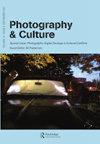Humanism after the Human: An Introduction
IF 0.3
4区 艺术学
0 ART
引用次数: 0
Abstract
Photography & Culture ’ s special issue “ Humanism after the Human ” engages with posthumanist theories to reconsider critiques of liberal humanism. The authors analyze a selection of nineteenth-century, mid-twentieth-century, and contemporary photography to challenge both a universalizing and glorifying liberal humanism that equates social with economic progress, as well as disembodied posthuman visions. Concerned with questions of what counts as human, non-human, and technological agency, the essays reinforce the importance of imagining alternatives to capitalism ’ s particularizing and objectifying norms. “ Humanism after the Human ” asks: how can we, as humans, realistically but differently interact with our natural, animal, and technological environment that we appro-priate and thereby co-produce? What roles do the artistic medium of photography and photographic images play in critiquing hegemonic humanist practices? And, how can contemporary posthumanist visions and photographic technologies resist subsummation by capitalist reproduction of liberal humanist values? issue人类之后的人文主义:导论
《摄影与文化》专刊《人之后的人文主义》以后人文主义理论为背景,重新审视对自由人文主义的批判。作者分析了19世纪、20世纪中期和当代摄影作品,以挑战将社会与经济进步等同起来的自由人文主义的普遍化和美化,以及无实体的后人类愿景。这些文章关注什么是人类、非人类和技术代理的问题,强调了想象资本主义特殊化和物化规范的替代方案的重要性。“人类之后的人文主义”提出的问题是:作为人类,我们如何才能现实而又不同地与我们所适应的自然、动物和技术环境相互作用,从而共同生产?摄影和摄影图像这一艺术媒介在批判霸权的人文主义实践中扮演着怎样的角色?当代后人文主义的愿景和摄影技术如何抵制资本主义对自由人文主义价值观的再生产?问题
本文章由计算机程序翻译,如有差异,请以英文原文为准。
求助全文
约1分钟内获得全文
求助全文

 求助内容:
求助内容: 应助结果提醒方式:
应助结果提醒方式:


